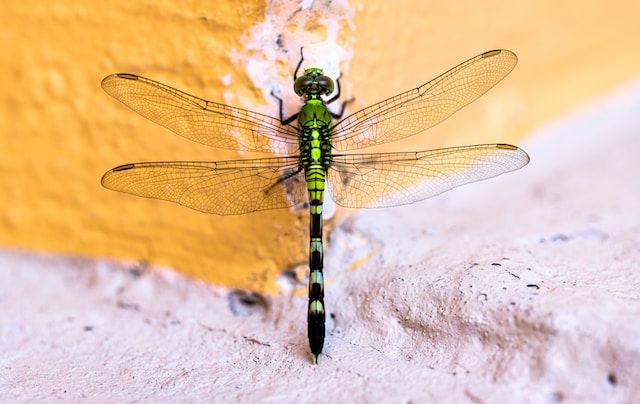Introduction: In the tapestry of the natural world, the dragonfly emerges as a sparkling jewel of the sky. With its vivid colors, delicate wings, and remarkable aerial abilities, the dragonfly captivates both our eyes and our imagination. Beyond its visual appeal, the dragonfly holds great significance in nature, playing a crucial role in various ecosystems.
Introduction: In the tapestry of the natural world, the dragonfly emerges as a sparkling jewel of the sky. With its vivid colors, delicate wings, and remarkable aerial abilities, the dragonfly captivates both our eyes and our imagination. Beyond its visual appeal, the dragonfly holds great significance in nature, playing a crucial role in various ecosystems. In this article, we delve into the enchanting world of the dragonfly, exploring its vibrant beauty and unraveling its ecological importance.
- A Kaleidoscope of Colors: The dragonfly’s radiant hues make it a true gem of the natural world. From shimmering blues and iridescent greens to fiery reds and vibrant yellows, the colors exhibited by different dragonfly species evoke a sense of awe and wonder. These vibrant shades serve multiple purposes, including attracting mates, signaling territorial boundaries, and even camouflaging against predators. As we admire the dragonfly’s iridescent colors, we witness nature’s artistry in full display.
- Guardians of Freshwater Ecosystems: Beyond their aesthetic appeal, dragonflies are key players in maintaining the delicate balance of freshwater ecosystems. During their aquatic nymph stage, dragonflies inhabit ponds, lakes, and streams, where they serve as voracious predators, controlling populations of mosquito larvae and other aquatic insects. By preying on these pests, dragonflies help regulate the populations of disease-carrying insects and contribute to the overall health of their aquatic habitats.
- Indicator Species of Environmental Health: Dragonflies are highly sensitive to changes in their environments, making them valuable indicators of ecosystem health. Their presence or absence can provide valuable insights into the quality of water bodies and the overall ecological balance of an area. Researchers and conservationists use dragonflies as bioindicators to assess water pollution levels, habitat degradation, and the impact of climate change on ecosystems. Monitoring dragonfly populations can help guide conservation efforts and promote sustainable management practices.
- Pollinators on the Wing: While bees often steal the spotlight as pollinators, dragonflies also play a significant role in the pollination of certain plant species. As they forage for prey, dragonflies inadvertently transfer pollen from flower to flower, aiding in the reproduction of various plants. Their robust flight and ability to cover large distances make them efficient pollinators in wetland and riparian habitats. Recognizing the dragonfly’s role in pollination highlights its importance in maintaining biodiversity and the intricate web of life.
Conclusion: The dragonfly, with its resplendent colors and extraordinary aerial abilities, occupies a unique place in the natural world. Beyond its visual allure, the dragonfly holds immense ecological significance as a predator, a bioindicator, and a pollinator. Appreciating the jewel-like beauty and understanding the ecological importance of the dragonfly prompts us to cherish and protect the diverse ecosystems that depend on its presence. As we strive to preserve the habitats that nurture these remarkable creatures, we ensure the survival of not only the dragonfly but also the delicate balance of nature that sustains us all.
Note: This article seeks to highlight the ecological significance of dragonflies but is not an exhaustive study. Further research, collaboration with experts, and adherence to ethical guidelines are recommended for a comprehensive understanding of the dragonfly’s ecological role and its conservation implications.

















Leave a Comment
Your email address will not be published. Required fields are marked with *